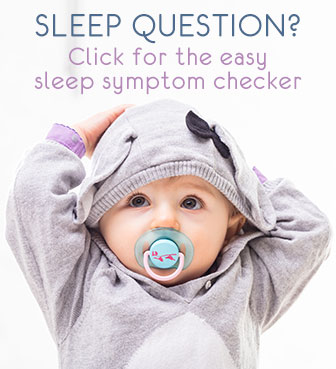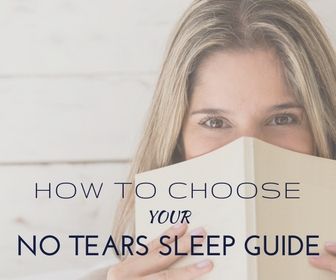Co-Sleeping Safety Guidelines
Author Name: Heidi Holvoet, PhD
Medical fact-check: Dr Leah Alexander, M.D., F.A.A.P.
Disclaimer: Unsafe co-sleeping can kill your baby. The author(s) of this article are not responsible for your child's safety: applying these guidelines properly and appropriately for your unique situation, and ensuring your baby's safety is your own responsibility (
full disclaimer
).
You've probably heard the warnings about not taking baby into the
family bed,
because of the risk of SIDS. It's true that babies have died in the
family bed, though experts like
Dr. McKenna
say that those do not occur more than in the own crib. And, in most cases, the
co-sleeping was done in unsafe conditions.
I recommend you read the article
Co-Sleeping, Room-Sharing, and Bed-Sharing
on Kidshealth.org. It gives an excellent overview and recommends 'crib in room' or 'a safe sidecar crib cosleeper arrangement' as safe cosleeping options.
I know that regardless of which side of the experts are correct, there will be times and situations when babies are taken into the family bed. UNICEF data tell us that by the age of 3 months old, about half of all babies will have slept in their parents' bed, whether intended or not
[2]
. We must make sure that IF that happens for you, it happens in the utmost awareness and with the best safety guidelines very carefully followed through.
So,
whenever you take your baby in bed with you - even if it's just
for a little while
- or you know you might end up falling asleep: make sure it's 100% safe for your baby! If you're unsure about safety, don't co-sleep. Also, never doze off with your baby on the sofa or couch or similar, that is always unsafe.
Tip!
Dr. James J. McKenna's book,
Sleeping with Your Baby: A Parent's Guide to Cosleeping
, combines well
researched facts with every day practical advice to help you make
co-sleeping a wonderful and safe experience.
Co-Sleeping Safety Guidelines
These safety guidelines are in line with what's advised by the AAP and UNICEF [2] .
- Only cosleep with a healthy child : a baby who has any issue, whether it is motor skills, breathing problems, digestion problems, is premature or light-weight, etc. may not react promptly enough when in trouble.
- Standard crib safety guidelines apply: baby sleeps on a firm surface (please be aware that most adult mattresses are not firm enough to meet the standards for safe baby mattresses so only allow you baby in your bed if your mattress is baby-mattress firm), without anything around her (no toys, cuddly animals, blankies, ...). Make sure she is never too hot and there is no smoking near her or the bedroom, ever.
- Prefer a standalone crib in your room, or a (safe!) sidecar cosleeper crib attached to your bed, over in-bed cosleeping for increased safety .
- Make sure baby is safe in your bed : there is no crevice, wedge or other part of the bed where your baby could get stuck in or between. Don't cosleep in a water bed or on a very soft mattress baby sinks in.
- Ideally baby sleeps between mom's side and a wall or bed rail /bumper that prevents her from falling out. Especially when breastfeeding, as a mom you instinctively react better to the baby.
- Baby's head is waaaay above your covers . Prefer to wear a warm top for yourself, and a wearable blanket for your baby. Then you only need a blanket or duvet from your waist down, that is tightly tucked in at your feet so it cannot come loose and move upward in bed.
- NO smoking : do not co sleep when you or your partner smoke - that includes smoking outside of the house. Smoking and SIDS are too closely related.
- Never sleep with your baby anywhere else than in your safe bed . Sofa's or couches are not safe - it is too easy for baby to slide off, or get stuck in a crevice or gap, or get smothered.
-
Do NOT
cosleep when
- you are overtired or exhausted (more on that below!)
- you are ill
- you drink alcohol in the hours before bedtime. Not even a small glass
- you use drugs, ever
- you are taking medicine. That includes those perceived as 'harmless' painkillers like paracetamol
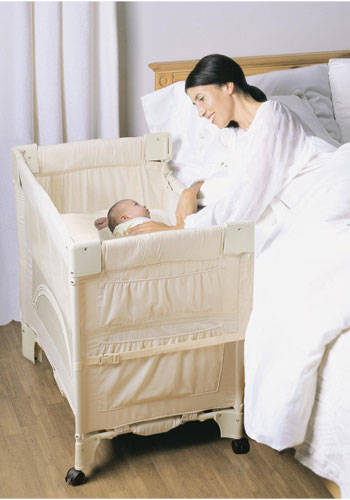
Important!
I'd like to repeat one of these guidelines: do not cosleep
when you're
overtired
.
The thing is of course that this is exactly when so many parents start cosleeping, or
end up
cosleeping
as I say. When you're so tired and desperate to get at least some
sleep.
But unfortunately exactly when you are exhausted, you're less likely to wake up when
your baby is in trouble. So be extra careful then and
use the techniques on this website
to help overcome both your and your baby's over-tiredness before considering cosleeping again.
Remember: consider a
cosleeper
bedside crib
as the excellent safe cosleeping solution: you
practically cosleep but your baby is safely in her own crib next to
you.
Resources
[1] Parent-infant cosleeping: the appropriate context for the study of infant sleep and implications for sudden infant death syndrome (SIDS) research Sarah Mosko, James Mckenna, Lynn Hunt 2004 Journal of Behavioral Medicine 16 (6): 589–610.
[2] Unicef Co-sleeping and SIDS: A guide for health professionals https://www.unicef.org.uk/babyfriendly/wp-content/uploads/sites/2/2016/07/Co-sleeping-and-SIDS-A-Guide-for-Health-Professionals.pdf
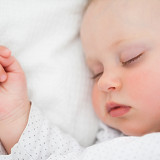
Self Soothing
by Heidi Holvoet, PhD

What to do when your baby wakes every hour
by Heidi Holvoet, PhD
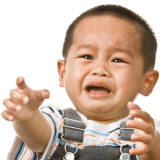
Separation Anxiety
by Heidi Holvoet, PhD
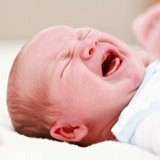
Colic
by Heidi Holvoet, PhD

Why does my baby wake up every hour?
by Heidi Holvoet, PhD


